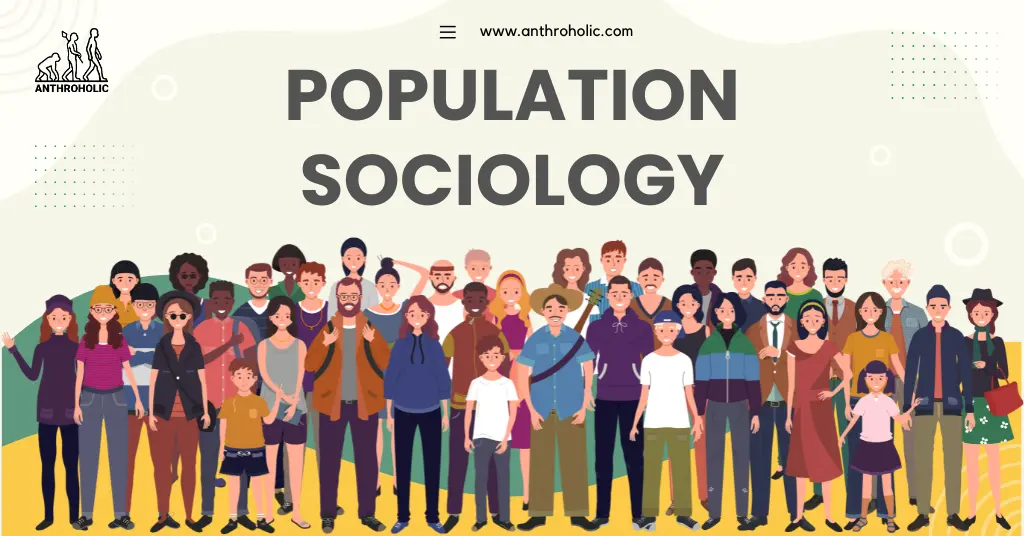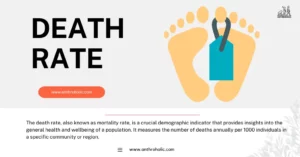AI Answer Evaluation Platform Live Now. Try Free Answer Evaluation Now
Population Sociology
Population sociology, an integral branch of sociology, scrutinizes the interrelationship between population dynamics and social structures. It involves the systematic study of population size, composition, and distribution, and how they are influenced by birth, death, migration, and aging [1].

Concepts in Population Sociology
Population Size
Population size refers to the total number of individuals in a population. It affects the social structure, as well as environmental, economic, and political aspects of a society [2].
Population Composition
Population composition examines characteristics such as age, sex, ethnicity, and educational attainment. This data is crucial in social planning and policy formulation [3].
Population Distribution
Population distribution concerns the spatial arrangement of populations. It can refer to how people are arranged by geographical region, urban or rural areas, and within specific locales like cities [4].
Fertility, Mortality, Migration, and Aging
These are the primary determinants of population change:
- Fertility: The incidence of childbearing in a population’s women [5].
- Mortality: The incidence of death in a population [5].
- Migration: The movement of individuals between areas [6].
- Aging: The proportion of older individuals in a population and how it changes over time [7].
Significance of Population Sociology
Understanding population dynamics has various critical implications:
- Predicting and addressing societal needs: Population studies can inform the provision of services like education, health, housing, and transportation.
- Guiding public policy: Policymakers can use population sociology data to create informed, equitable policies.
- Environmental planning and sustainability: Studying population dynamics aids in assessing environmental impact and planning sustainable development.
Theories in Population Sociology
Malthusian Theory
Thomas Malthus argued that while population grows geometrically, resources grow arithmetically. This disparity, he claimed, leads to overpopulation and resource scarcity [8].
Demographic Transition Theory
This theory postulates that societies progress from a pre-industrial system of high birth and death rates to a post-industrial system where both rates are low [9].
Social Constructionist Theory
This theory suggests that societal changes, such as industrialization and modernization, affect population patterns and structures. The theory emphasizes how societal factors construct population issues [10].
Population Sociology in Addressing Global Issues
Overpopulation
Overpopulation poses challenges such as resource depletion, environmental degradation, and socio-economic problems. Population sociology provides tools to understand and address these issues.
Aging Population
With increasing life expectancy and decreasing fertility rates, many societies face an aging population. This demographic shift impacts economies, healthcare systems, and social structures [11].
Migration and Urbanization
Globalization and socio-economic disparities drive migration and urbanization, leading to cultural shifts and resource allocation challenges. Population sociology helps understand these dynamics for policy-making and social planning.
Conclusion
Population sociology is instrumental in interpreting and addressing social issues tied to population dynamics. By studying population size, composition, and distribution, and changes due to fertility, mortality, migration, and aging, we can better inform public policy, plan societal services, and promote sustainable development.
References
[1] Poston, Dudley L., and Michael Micklin. 2006. Handbook of Population. Springer.
[2] Bogue, Donald J. 1969. Principles of Demography. John Wiley & Sons.
[3] Shryock, Henry S., Jacob S. Siegel, and associates. 1976. The Methods and Materials of Demography. U.S. Department of Commerce, Bureau of the Census.
[4] Weeks, John R. 2012. Population: An Introduction to Concepts and Issues. Wadsworth Cengage Learning. https://www.academia.edu/32381843/POPULATION_An_Introduction_to_Concepts_and_Issues_Tenth_Edition
[5] Bongaarts, John. 1978. “A Framework for Analyzing the Proximate Determinants of Fertility.” Population and Development Review.
[6] Massey, Douglas S. 1988. “Economic Development and International Migration in Comparative Perspective.” Population and Development Review.
[7] Kinsella, Kevin, and Wan He. 2009. An Aging World: 2008. U.S. Census Bureau.
[8] Malthus, Thomas Robert. 1798. An Essay on the Principle of Population. J. Johnson.
[9] Notestein, Frank W. 1945. “Population – The Long View,” in Food for the World, edited by T.W. Schultz. University of Chicago Press.
[10] Riley, Nancy E., and James McCarthy. 2003. “Demography in the Age of the Postmodern.” Cambridge University Press.
[11] Harper, Sarah. 2014. “Economic and social implications of aging societies.” Science.




